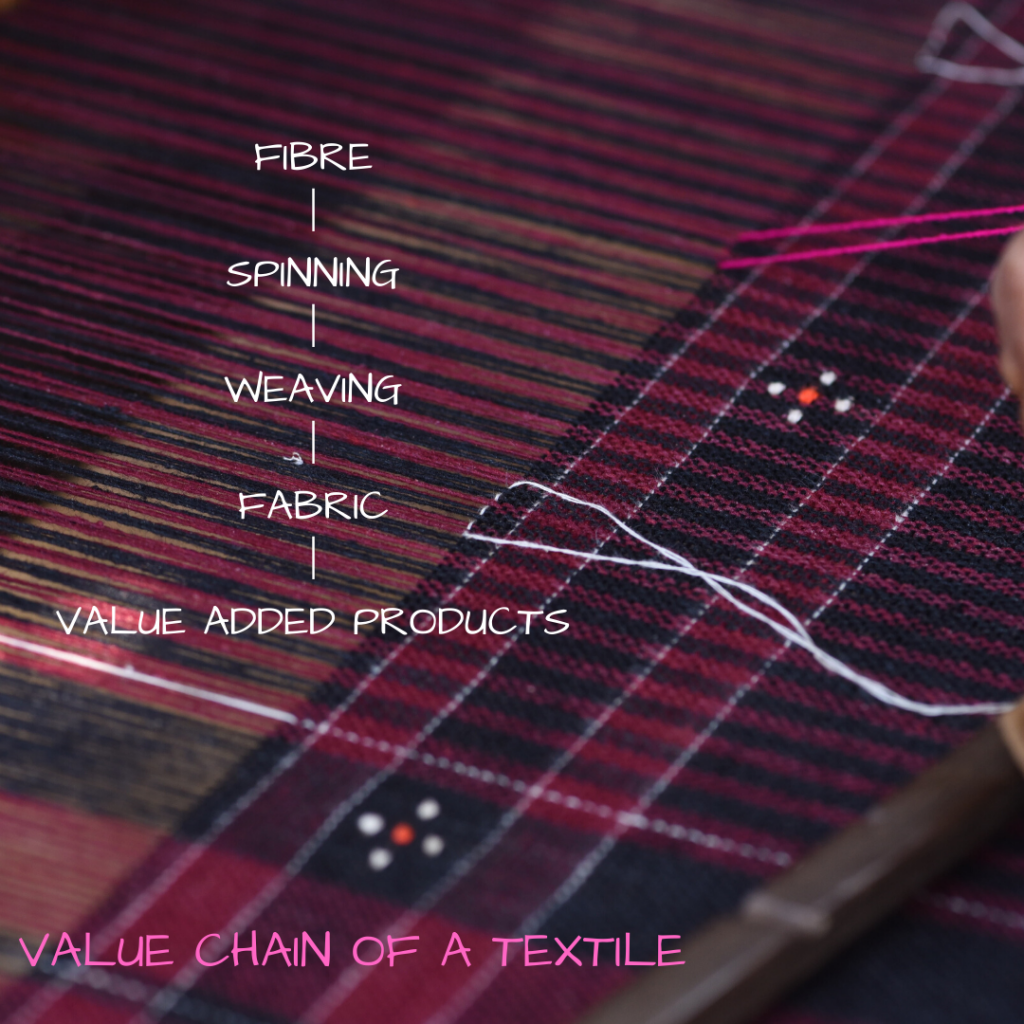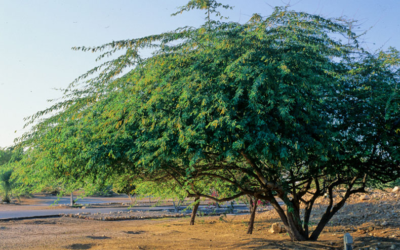The semi-arid region of Kutch often paints a picture of emptiness & infertility with its vast salt pans, sparse vegetation, and seismic activities. However, the largest district in India is a confluence of culturally diverse craft practicing communities. These communities settled here centuries ago following migration out of Rajasthan, Sindh, Afghanistan, and present-day Iran. To these varied ethnic groups, handicrafts are heritage products that were originally built for diverse rites and rituals associated with their religious faiths. Over time, as the knowledge of their traditions passed on to the future generations, their cultures morphed into their livelihoods. These livelihoods continue to remain relevant in present-day India.
In Kutch, over 20 different crafts are practiced. They can broadly be classified into two categories:
- Textile Crafts (Printed and Woven)
These are crafts done either to produce a textile or on a textile post-production, such as Hand Spinning, Hand Weaving, Block Printing, and Embroidery. - Non-Textile Crafts
These crafts are produced from Hard Materials. It includes crafts such as Lacquer Turned Wood, Leather, Copper Coated Bells, and Pottery.
To get an overview of the various crafts practiced by the people of Kutch, let’s get an insight into the product and its creation process. For the sake of brevity, we shall refrain from indulging into the roots and complexity of the communities.
It’s important to note that many of the textile crafts come together to form an elaborate value chain. Such elaborate value chains may or may not be evident in Hard Material Crafts. First, let us understand how a piece of fabric is produced.
Fibre-based Value Chains

Fibres:
In Kutch, Kala Cotton and Desi Wool are the primary sources of fibers from which textiles are produced. Kala Cotton is Kutch’s indigenous cotton. An inherently organic crop, it has a high tolerance for both disease and pests, requiring no pesticides and synthetic fertilizers to aid its growth. It is a short-staple crop, purely rain-fed and often intercropped with Castor. Kala cotton is indigenous to this area. It is resilient and resurgent in the face of difficult land conditions. It forms a strong, coarse, stretchable fiber that is often used in denim. It is difficult to produce fine quality textiles with it, as its short staple length translates to fewer twists per inch of yarn. Over time, its use has diminished significantly in mainstream markets.
Spinning:
Hand-spinning is a craft where fibres come together and are fashioned into a singular thread by a twist added to them often using Charkhas. Various blends can be created by using fibres of different origins or colors. In Kutch, Kala Cotton is hand spun using Charkhas such as Kisaan Charkha, Peti Charkha or Ambar Charkha. Whereas Desi Wool can be spun on Doshi Charkha or simply by hand (Takli Spinning)
Hand Weaving:
Threads are fashioned together in an interlocking manner. Length wise or longitudinal threads are called the warp yarns. They are held stationary in tension on a frame or loom while the transverse threads, known as weft, are drawn through and inserted over-and-under the warp. Weaving in Kutch is done using many different types of looms and various techniques. We have weaving techniques such as Mashroo Weaving, Kharad Weaving, and extra weft techniques to create textiles using different materials.
Fabric:
Post weaving, a fabric is produced which can be fashioned into many different garments, depending on the length and breadth of the fabric. Sarees, scarves, stoles, shawls, bedding items, clothes etc can be produced using the fabrics. Many value-added items such as pouches and diary covers can also be produced using the scrap textile, or the unused pieces of the fabric.
Printing Crafts
Block Printing- Ajrakh
Ajrakh patterns use complex geometry to create starry constellations like motifs in indigo, madder, black and white, across lengths of cloth. The cloth is made in a sixteen step process of washing, dyeing, printing, and drying, which requires a high level of skill and concentration in order to keep the colors fast and even. Pomegranate seeds, gum, harde powder, wood, flour of kachika, flower of dhavadi, Allizarine and locally cultivated Indigo are some of the natural resources that printers in this craft use for naturally dyeing the fabric.
Block Printing- Bela
Bela style of printing often features large scale and graphic prints, characterized by a printing technique wherein the printer applies vegetable dye directly to a piece of cloth with a hand carved woodblock. Herein, mud is often used as a resist material for printing. Red and black are iconic colors of Bela printing, colors which were used the most for their fastness.
Block Printing- Batik
This process involves using wax as a resist material. The wax is heated and printed using a carved wooden block on a plain piece of cloth. The cloth is left to dry and the wax hardens. Afterward, it is dyed in color. The effect produced is a vein-like quality that creates intricate, thin web-like patterns across the cloth. The printing, washing, and dyeing process is repeated several times in order to achieve a multiple colored fabric.
Bandhani
Much like the local block printers, bandhani artisans use local natural resources like madder and pomegranate to dye their cloth in a brilliant range of hues. The technique of tie and dye is tightly winding a thread around a section of cloth, dyeing it, and then removing the thread to reveal a circular resist motif. Bandhani is used for daily attire and for auspicious occasions, like births, weddings, and goddess temple pilgrimage.
Embroidery
Kutch, Gujarat is renowned for its fine folk embroideries where different patterns are ingrained on to a fabric characterised by swift movements of the hand. Kutch is home to more than 17 distinct types of embroideries including the Soof, Mutva, Rabari and Paako style of embroidery that adorn the region’s dress and fabrics.
Other Textile Crafts
Namda
This is the craft of felting using short fibres of wool that are interlocked with water. No stitching is involved.
Recycled Plastic Weaving
Khamir cleans, sorts and segregates used plastic based on its color and quality. Cleaned plastic is cut into long strips by women from villages near Kukma, Bhuj. The plastic strips of different colors are woven into durable textiles. Nylon is used for the warp, and plastic forms the weft, creating a thick dense material useful for mats, backpacks, or cushions. Weaving is a skill intrinsic to the Kutch region, and the recycled plastic is woven using a technology ancient to Kutch – the pit loom.
Rogan Art
Rogan is the technique of painting on fabric, crafted from thick brightly coloured paint made with oil of Castor seeds, a crop grown locally in Kutch. A small amount of this paint paste is placed onto their palms, and rubbed by a metal rod to provide heat. It is then carefully twisted into motifs and the designs are folded into a blank fabric, thereby printing its mirror image. In effect, it is a basic form of printing. While designs used to be more rustic, over time the craft has become more stylized and now is almost a high art.
Non-Textile Crafts
Pottery
Natural resources such as clay, water, leaves of plant called ‘Jaru’ (local name), thorns and tender stems of ‘Prosopis Julifera’, ‘white clay’ and black stone is required by the potters for activities related to the craft. Local Clay is the clay collected from the banks of local lakes. Hard lumps of clay is beaten into a fine powder. This powder is mixed with water and kneaded into an elastic dough. The artisans sit at their potter’s wheel and as the wheel spins, they give shape to the dough, turning it into countless forms of decorative earthenware, often also used in kitchen. They craft a wide variety of vessels such as matka for water storage, ketli to hold tea, and kulhad to keep buttermilk. Red, black, and white clay-based paints are used to decorate each piece of pottery.
Lacquer Turned Wood
Lac is obtained from trees where the lac-producing insect leaves behind a resinous secretion. It is mixed with different colours and applied to wooden items such as rolling pins, candle sticks, spoons and other cutlery. It is done by applying heat through turning the wooden item with a hand lathe. In the process, the artisan manoeuvres the lacquered colors to create patterns by hand in kaleidoscopic designs. This form of lacquered patterning is found only in Kutch.
Copper Coated Bells
Rectangular strips of recycled metal are fashioned into cylindrical bells of different sizes using natural resources such as mud, wood of ‘Prosopis Juliflora’ and water. The receive their distinct sound when the wet bell is covered with a mixture of powdered brass and copper, wrapped in a pancake of local clay and cotton, and placed in a kiln to bake. Each bell is buffed and polished to accentuate its unique metallic sheen.
Leather
Kachchhi leather is so well treated and durable that it can hold water. It is fashioned into modern products like shoes, bags, diaries and other accessories. The main techniques of leather craftsmanship in Kutch are Jari Kaam and Torni. In Jari Kaam, a silver and golden Jari is used to create various design and motifs on leather goods. In Torni work technique, the coarser yarns are used to create colorful patterns on various leather items. It is mainly used to decorate the borders of leather goods. The dyeing of leather is also a unique practice of Kutch. The raw leather is dyed with various dyes from the local market. Punching is also often found on leather items, etching geometric patterns on the leather.
Knife Making
Raw materials used for knife making are metals such as brass, iron, copper, zink, aluminium, lead and steel. Majority of the metals are bought from scrap traders based in Bhuj city. For fresh metal sources, the artisans purchase them from traders in Rajkot and Ahmedabad. In the past, artisans used the horns of buffalos to make the handles. They are now replaced with acrylic synthetic material from Anjar. Usually, one artisan carries out the entire production process, which is good for artisanal skills and production efficiency.
Wood Carving
Traditionally carved wood are evocative of the motifs found in the embroidery styles of the region where the craft is practiced. The finished product is embellished with mirrors which also simulates the embroideries. Intricate works of carved wood include columns, pillars, balconies, ceilings, pigeon-houses, doors and windows with ornate floral motifs, birds, animals and human figures.

Silversmithy
From bangles to earrings to anklets, each silver jewellery is an integral part of the village attire, made by silversmiths who have specialized skills of producing different items.
Source of images and information: Khamir
Not to be used without permission.











































0 Comments